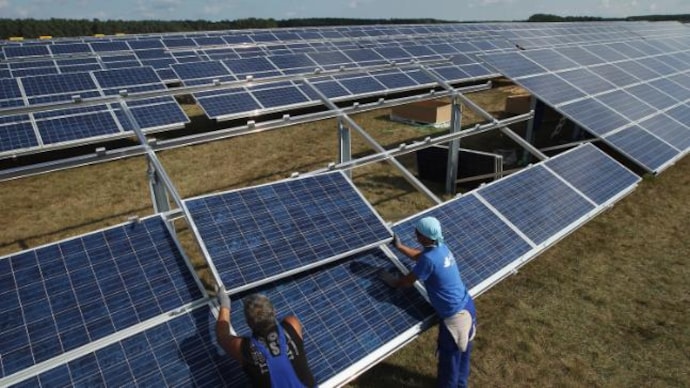Scientists discover new ways to turn sunlight into fuel: Step-by-step process of solar energy production
New ways to produce and store solar energy can now be used to revolutionise the systems used for renewable energy production.

In a breakthrough move, British scientists have used natural sunlight to convert water into hydrogen and oxygen by mixing biological components and man-made technologies.
What is the study about?
Scientists at the St John's College, University of Cambridge, used semi-artificial photosynthesis to explore new ways to produce and store solar energy, a finding that can now be used to revolutionise the systems used for renewable energy production.
Their method also managed to absorb more solar light than natural photosynthesis.
"Natural photosynthesis is not efficient because it has evolved merely to survive so it makes the bare minimum amount of energy needed, which is, around 1-2 per cent of what it could potentially convert and store," said lead author Katarzyna Soko, a doctoral student at the University's St. John's College.
Read: How Swajals solar-powered Water ATMs are solving Indias water problem

How is this research different from artificial photosynthesis?
Artificial photosynthesis has been around for decades but it has not yet been successfully used to create renewable energy because it relies on the use of catalysts, which are often expensive and toxic.
This means it cannot yet be used to scale up findings on an industrial level.
READ| This is India's first school to run completely on solar energy
On teh other hand, the new model published in the journal 'Nature Energy' is the first to successfully use hydrogenase and photosystem II to create semi-artificial photosynthesis driven purely by solar power.
The Cambridge research is part of the emerging field of semi-artificial photosynthesis which aims to overcome the limitations of fully artificial photosynthesis by using enzymes to create the desired reaction.
Findings of the study
The team not only improved on the amount of energy produced and stored, they managed to reactivate a process in the algae that has been dormant for millennia.
"Hydrogenase is an enzyme present in algae that is capable of reducing protons into hydrogen. During evolution, this process has been deactivated because it wasn't necessary for survival but we successfully managed to bypass the inactivity to achieve the reaction we wanted -- splitting water into hydrogen and oxygen," Soko explained.
Soko hopes the findings will enable new innovative model systems for solar energy conversion to be developed.
READ| Karnataka leads India in new energy, generates highest power from renewable resources this year
Here is a step-by-step explanation of how solar energy is produced:
- Solar energy is harvested by absorbing sunrays through solar panels
- Solar panels consist of photovoltaic or PV cells that absorb sunrays directly
- Each PV cell is made of three layers, much like a sandwich. The two outer layers are made of silicon that acts as a semiconductor
- The silicon slices are mixed with other materials to give it a positive and a negative electrical charge
- Phosphorus is added into the top silicon layer and boron is added to the bottom one. Phosphorus adds extra electrons into the slice, which makes the top layer a negative charge and boron makes the bottom layer a positive charge by reducing the number of electrons
- These two layers make the PV cell that absorbs Photon cell from sunlight. The photon knocks an electron out of the silicon cell
- The freed electrons then hit a metal contact underneath the silicon coating, which treats the free electrons as electricity and transfers them to a 60-cell module
- The electrons reach the module and complete a closed-circuit electricity flow that goes through an inverter, which is attached to the panel
- The inverter converts the direct current into an alternative current and distributes to the destination appliance
- An off-grid system is attached to the panel and the inverter to store power, which would be used in the night when there is no sunlight
(With inputs from IANS)
READ| Diu becomes India's first solar-powered island: All you need to know
READ| This Indian airport is the world's first fully solar powered airport
READ| How Swajals solar powered Water ATMs are solving Indias water problem
Interested in General Knowledge and Current Affairs? Click here to stay informed and know what is happening around the world with our G.K. and Current Affairs section.
To get more updates on Current Affairs, send in your query by mail to education.intoday@gmail.com
